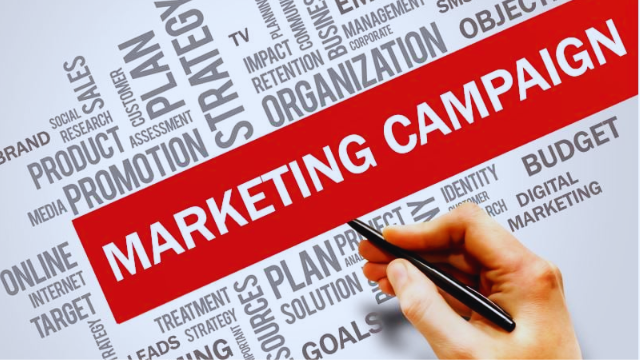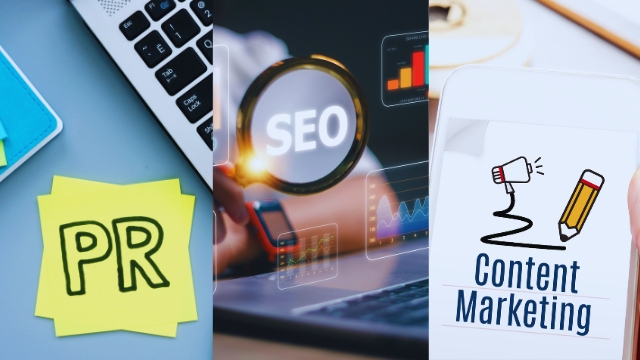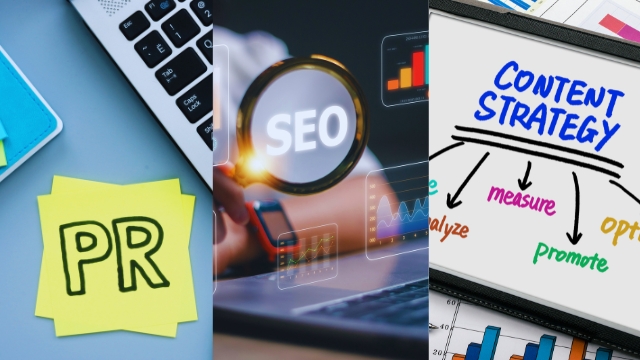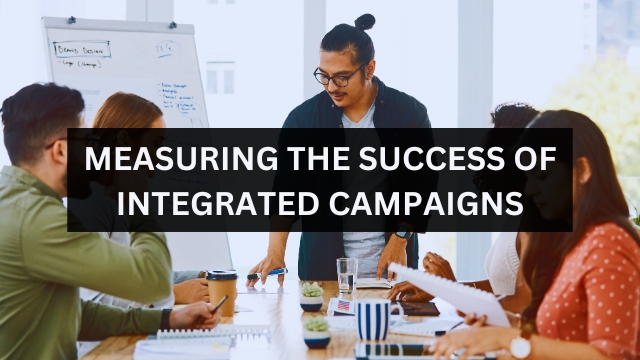In today’s fast-paced digital landscape, are you finding it challenging to make your brand stand out? You’re not alone. With the constant barrage of information consumers face daily, it’s become increasingly difficult for businesses to capture and retain attention. But what if there was a way to amplify your message across multiple channels simultaneously? Enter the world of integrated marketing campaigns.
Integrated marketing campaigns are like a well-orchestrated symphony, where PR, SEO, and content marketing play in perfect harmony to create a powerful brand presence. By aligning these strategies, businesses can maximize their impact and achieve results that far surpass what each component could accomplish alone.
Let’s dive into how you can harness the power of integrated marketing to elevate your brand and drive real results.
Part 1: Understanding Integrated Marketing Campaigns

1. What is an Integrated Marketing Campaign?
Imagine you’re trying to tell a story, but instead of using just one medium, you’re using several at once – that’s essentially what an integrated marketing campaign does. It’s a holistic approach that combines various marketing strategies to deliver a consistent, unified message across multiple channels.
The beauty of integrated marketing lies in its synergy. By aligning PR efforts, SEO strategies, and content marketing initiatives, you create a powerful amplification effect. This approach ensures that your target audience encounters your brand message repeatedly and consistently, regardless of where they interact with your brand.
Benefits of integrated marketing include:
– Increased brand recognition
– Improved customer engagement
– More efficient use of marketing resources
– Enhanced brand credibility
– Better return on investment (ROI)
2. The Role of PR in Integrated Marketing

Public Relations (PR) is all about shaping public perception and building relationships. In an integrated marketing campaign, PR serves as the megaphone, amplifying your brand’s voice and story to a wider audience.
PR enhances brand awareness by:
– Securing media coverage in relevant publications
– Managing brand reputation
– Facilitating partnerships and collaborations
– Creating newsworthy events and stories
For instance, a well-timed press release about a new product launch can generate buzz, while a strategic partnership announcement can position your brand as an industry leader.
3. The Role of SEO in Integrated Marketing

Search Engine Optimization (SEO) is the compass that guides potential customers to your digital doorstep. In an integrated campaign, SEO ensures that your brand is visible when and where it matters most.
SEO improves organic visibility by:
– Optimizing website content for relevant keywords
– Enhancing site structure and user experience
– Building high-quality backlinks
– Improving local search presence
Consider how a well-optimized blog post can not only rank well in search results but also serve as a valuable resource for journalists researching a story, thereby supporting your PR efforts.
4. The Role of Content Marketing in Integrated Campaigns

Content marketing is the fuel that powers your integrated campaign. It’s the substance behind your PR stories, the foundation of your SEO efforts, and the value you offer to your audience.
Content marketing is crucial because it:
– Educates and informs your audience
– Establishes your brand as a thought leader
– Provides shareable assets for social media and PR
– Creates opportunities for organic backlinks
For example, a comprehensive industry report can serve multiple purposes: it can be the basis for a PR pitch, optimized for search engines, and broken down into smaller pieces of content for social media.
Part 2: How to Combine PR, SEO, and Content Marketing

5. Strategic Planning for Integrated Marketing Campaigns
The key to a successful integrated campaign lies in meticulous planning. Start by defining clear objectives that align with your overall business goals. Are you looking to increase brand awareness, drive more leads, or establish thought leadership?
Once you have your objectives, create a unified message that will serve as the cornerstone of your campaign. This message should be compelling, relevant to your target audience, and flexible enough to be adapted across different channels.
Steps for strategic planning:
1. Define campaign objectives
2. Identify target audience segments
3. Develop a core message and supporting themes
4. Choose appropriate channels and tactics
5. Set measurable KPIs
6. Crafting a Seamless PR, SEO, and Content Strategy

Aligning your PR, SEO, and content efforts is crucial for creating a cohesive campaign. Start by identifying topics and themes that resonate with your audience and align with your campaign objectives.
For PR:
– Develop newsworthy angles around your core message
– Create a media list targeting relevant journalists and publications
– Prepare press releases, media kits, and spokesperson briefs
For SEO:
– Conduct keyword research to identify relevant search terms
– Optimize website content and structure
– Plan for link-building opportunities
For Content Marketing:
– Create a content calendar that supports your campaign themes
– Develop a mix of content types (blog posts, videos, infographics)
– Plan for content distribution across owned and earned channels
Ensure consistency by creating a style guide that outlines tone, messaging, and visual elements to be used across all channels.
7. Implementing Your Integrated Campaign

Launching your integrated campaign requires careful coordination and timing. Here’s a step-by-step guide:
1. Prepare all assets: Ensure all content, PR materials, and website optimizations are ready.
2. Brief your team: Make sure everyone involved understands the campaign objectives and their role.
3. Launch PR initiatives: Begin with press releases and media outreach.
4. Activate content marketing: Start publishing and promoting campaign content.
5. Monitor SEO performance: Keep track of rankings and organic traffic.
6. Engage on social media: Share content and interact with your audience.
7. Adjust in real-time: Be prepared to tweak your strategy based on initial results.
8. Measuring the Success of Integrated Campaigns

To gauge the effectiveness of your integrated campaign, you need to track key metrics across all channels. Some essential metrics include:
– PR metrics: Media mentions, sentiment analysis, share of voice
– SEO metrics: Organic traffic, keyword rankings, backlink profile
– Content metrics: Engagement rates, time on page, conversions
– Overall campaign metrics: Brand awareness lift, lead generation, ROI
Use tools like Google Analytics, SEMrush, and media monitoring platforms to gather and analyze this data. Regularly review these metrics and be prepared to adjust your strategy as needed.
FAQs
Q1. What is the difference between PR and content marketing in integrated campaigns?
A1. While both PR and content marketing aim to build brand awareness and credibility, they differ in approach and channels. PR focuses on earning media coverage and managing public perception through third-party endorsements. Content marketing, on the other hand, involves creating and distributing valuable, relevant content directly to your audience through owned channels like your website and social media.
Q2. How does SEO enhance an integrated marketing campaign?
A2. SEO enhances an integrated marketing campaign by improving the visibility and discoverability of your content and brand online. It ensures that when people search for topics related to your campaign, your content appears in search results. This increased visibility supports both PR and content marketing efforts by driving organic traffic to your campaign assets.
Q3. Can small businesses benefit from integrated marketing campaigns?
A3. Absolutely! Integrated marketing campaigns can be particularly effective for small businesses as they allow for efficient use of limited resources. By aligning PR, SEO, and content marketing efforts, small businesses can create a more significant impact than they might achieve by focusing on each channel separately. The key is to start small, focus on a clear message, and gradually expand the campaign as you see results.
Conclusion:
Integrated marketing campaigns offer a powerful way to amplify your brand’s message and achieve maximum impact in today’s crowded digital landscape. By strategically combining PR, SEO, and content marketing, you can create a cohesive brand experience that resonates with your audience across multiple touchpoints.
Remember, the key to success lies in careful planning, consistent messaging, and continuous optimization based on performance data. As you embark on your integrated marketing journey, keep your audience at the center of your strategy, and don’t be afraid to get creative in how you combine different marketing elements.
Are you ready to take your marketing efforts to the next level? Start planning your integrated campaign today and watch as your brand visibility and engagement soar to new heights.
Author Profile

- Nitin Jain - C.E.O - India PR Distribution
- Nitin Jain is the founder and C.E.O of India PR Distribution - India's top Press Release Distribution and PR Agency. Nitin has more than 20 years of experience in PR, Corporate Communications, Digital Marketing, Branding Strategy and Lead generation.
Latest entries
 Search OptimizationSeptember 16, 2025What Is Digital PR and Why It Matters for SEO Success
Search OptimizationSeptember 16, 2025What Is Digital PR and Why It Matters for SEO Success Press releaseAugust 14, 2025Press Release Distribution: How to Share Your News Effectively
Press releaseAugust 14, 2025Press Release Distribution: How to Share Your News Effectively Search OptimizationJuly 29, 2025Digital PR for SEO – The Ultimate Guide to Boosting Your Rankings
Search OptimizationJuly 29, 2025Digital PR for SEO – The Ultimate Guide to Boosting Your Rankings Press Release TipsJuly 24, 2025How to Do PR for Startup: 2025 Readiness Checklist
Press Release TipsJuly 24, 2025How to Do PR for Startup: 2025 Readiness Checklist

